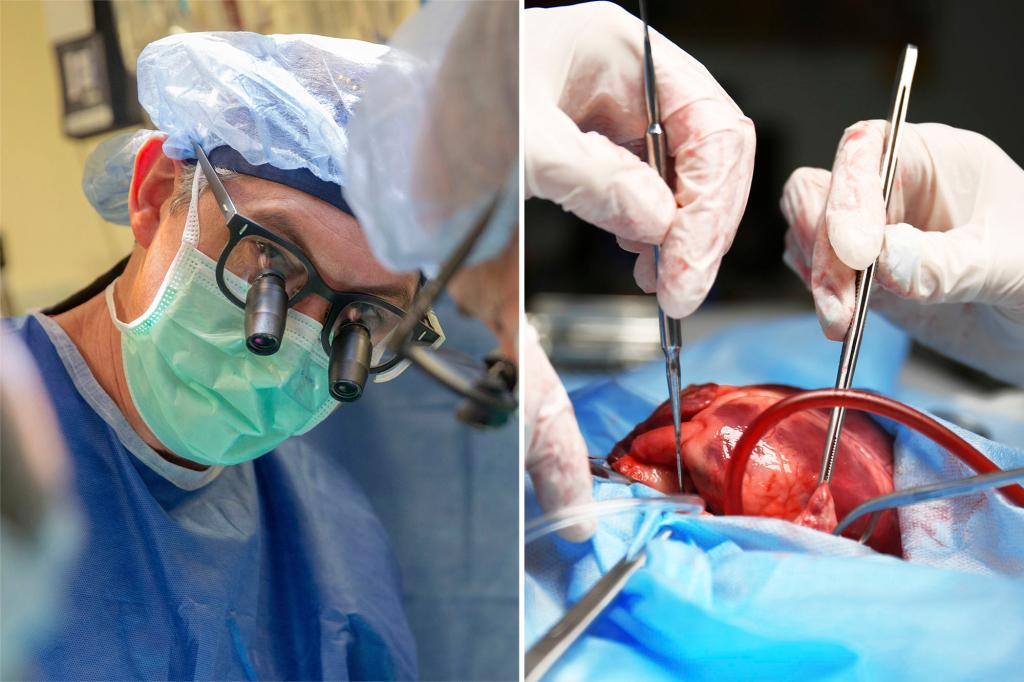Two college hospitals are pioneering New ways to expand life -saving cardiac transplants For adults and infants, a thoroughbred that might assist restore potential coronary heart donations which are too typically left unused.
The brand new research goals to beat the boundaries to using organs by somebody who dies when their coronary heart stops. Known as DCD, or donation after blood deathIt consists of controversial method for restoring or utilizing costly machines.
College surgeons Duke and Vanderbilt introduced on Wednesday that they have been created individually Simple approaches to retrieve these heartsS Within the New England Journal of Medication, they’ve efficiently described the center transplant of a 3-month-old child in Duke and three males in Vanderbilt.
“These DCD hearts work simply as nicely from the hearts of lifeless mind donors,” says Vanderbilt lead writer Dr. Aaron M. Williams.
How are the hearts saved for donation
Most transplanted hearts They arrive from donors who’re lifeless from the mind. In these conditions, the physique is left on a fan that retains the center beating till the organs are eliminated.
The dying of blood circulation happens when somebody has an unperturbed mind trauma, however since all of the mind perform has not ceased, the household decides to withdraw important assist and the center stops. Because of this organs can spend a while with out oxygen earlier than being restored, delaying climate is normally potential for kidneys and different organs, however this may elevate questions on coronary heart high quality.
To oppose the injury and to find out whether or not the DCD organs have been used, surgeons can pump blood and oxygen to the belly and thoracic organs of the deceased donor after the mind is diverted. However that is ethically controversial for synthetic restoration of circulation even quickly and a few hospitals prohibit this system referred to as normothermic regional perfusion or NRP.
An alternative choice is to “resuscitated” DCD organs in a machine that pumps blood and vitamins on the way in which to the hospital for transplantation. The machines are costly and complex, and D Joseph Turek stated that the units can’t be used for small hearts of younger youngsters -the age group with probably the most in want.
New methods to avoid wasting hearts
The Turek group discovered a medium base: take away the center and fix a number of tubes of oxygen and blood to briefly consider its means to perform not in a machine however on a sterile mass within the working room.
They practiced with piglets. Then the actual take a look at got here. In one other hospital, assist for all times was about to be withdrawn from 1 month previous, whose household wished to donate-and who could be an excellent match for a 3-month-old affected person to the Duke in a determined want for a brand new coronary heart. The opposite hospital didn’t enable the controversial NRP restoration method, however left the Turek group to check the experimental different.
It solely took 5 minutes to say “the coronary arteries are crammed nicely, it is pink, it is beating,” Turek stated. The group instantly put the small coronary heart on the ice and ran it again to Duke.
The Vanderbilt system is even easier: infusion of the center with nutrient-rich, a chilly preservative answer, earlier than eradicating it from the donor’s physique, just like how the hearts of lifeless donors are processed.
This “fills the vitamins which are exhausted throughout the dying course of and assist to guard it for transport,” Williams defined, including that Vanderbilt had performed about 25 such transplants to this point. “Our opinion is that you just don’t have to resuscitate the center.”
Extra gifted hearts are wanted
There’s a large Need more transplant hearts. A whole lot of hundreds of adults undergo from superior coronary heart failure, however many are by no means supplied transplantation resulting from organ deficiency.
Yearly, round 700 children in the United States are added to the transplant list For a brand new coronary heart, about 20% die. Turek stated infants have been at explicit danger.
Final yr, individuals whose life ended by means of the dying of blood circulation made 43% of the deceased donors of the nation, however solely 793 of 4572 cardiac transplants.
That’s the reason many consultants say that discovering methods to make use of extra of those hearts is essential. New research are a small and early stage, however promising, stated Mum or dad Brendan of NYU Langone Well being, who leads the ethics of transplantation and coverage analysis.
“Innovation to efficiently discover methods to revive organs after the dying of blood circulation are important to cut back organ shortages,” he stated.
If the options get out, “I completely assume coronary heart packages might be excited, particularly in hospitals which have rejected NRP.”

